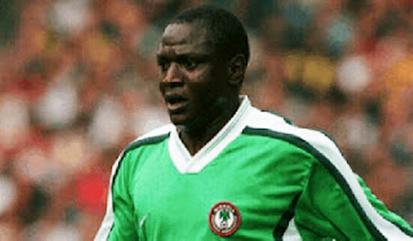James Baldwin: What to know about civil rights activist honored by Google Doodle

In celebration of Black History Month, Google is featuring a special Google Doodle dedicated to James Baldwin, a prominent American writer and civil rights activist.
Recognized as one of the nation’s iconic Black authors, Baldwin crafted a legacy focused on social justice, producing renowned works such as “Go Tell It on the Mountain” and “Giovanni’s Room.”
Google praises Baldwin for his poetic and groundbreaking depictions of Black masculinity, emphasizing their resonance beyond Black communities. Notably, his novel “Giovanni’s Room” played a pioneering role in bringing nuanced portrayals of homosexuality to mainstream culture long before the gay liberation movement gained momentum.
“His depictions of Black masculinity in America were as poetic as they were groundbreaking, and they resonated far beyond Black communities,” Google said. Baldwin’s second novel. “Giovanni’s Room,” was one of the first to bring in-depth characterizations of homosexuality to mainstream culture, “well before the gay liberation movement had gained steam.”
Who was James Baldwin?
Born on August 2, 1924, in New York City, Baldwin embraced his step-father’s guidance as a teen, becoming a junior minister in a Harlem church. Simultaneously, he delved into creative pursuits at his high school’s magazine, publishing poems, short stories, and plays.
In 1944, Baldwin’s initial struggles gave way to a 12-year journey in crafting his debut novel, “Go Tell It on the Mountain,” now revered as a 20th-century literary gem. A fellowship led the 24-year-old Baldwin to Paris, where he penned impactful essays like “Notes of a Native Son” and “The Fire Next Time.”
Continuing to confront racial tensions, Baldwin wrote essays and novels, including the 1974 work “If Beale Street Could Talk,” later adapted into an Academy Award-winning film in 2018. His writings offered crucial representation to marginalized voices, influencing civil rights leaders who, in turn, shaped societal progress.
Baldwin’s impactful legacy endured, providing inspiration during the civil rights movement. He passed away in 1987 following a battle with stomach cancer.
Recommended James Baldwin works
If you are looking to familiarize yourself with Baldwin’s work, here are some of his most famous literary pieces:
- “Go Tell It on the Mountain” (1953): Baldwin’s first novel and widely considered to be his finest work. The novel is based on his own experiences as a teenaged preacher in a small revivalist church.
- “Notes of a Native Son” (1955): A collection of ten essays, mostly tackling the issues of race in America and Europe.
- “Giovanni’s Room” (1956): A novel about a young expatriate American’s inability to come to terms with his sexuality.
- “Another Country” (1962): A novel that “renowned for its frank portrayal of bisexuality and interracial relations, published in a time when these subjects were taboo,” according to Britannica.
- “Blues for Mister Charlie” (1964): A play that served as a denunciation of racial bigotry and hatred.
- “If Beale Street Could Talk” (1974): A novel about a love story set in Harlem in the 1970s.
Who designed today’s Google Doodle?
Google attributes the Baldwin Doodle to Jon Key, a guest artist based in New York City. Key shared that James Baldwin’s impactful writings and teachings deeply influence his work and personal journey as a Black Queer individual.
Emphasizing Baldwin’s unwavering self-acceptance, Key drew inspiration from images of Baldwin immersed in his writing at home. Reflecting on this, Key envisions Baldwin crafting masterpieces like ‘Giovanni’s Room’ or ‘The Fire Next Time’ at his home office or kitchen table.
READ ALSO: Putin’s State Of The Nation Address: Say hello to Sarmat the ‘Satan’
In expressing his aspiration, Key encourages people to pause and acknowledge the significant contributions of Baldwin and other Black literary icons who have reshaped America’s literary landscape.
How February became Black History Month
Black History Month, an officially recognized commemoration, was established nearly a century ago to honor the numerous contributions of Black individuals to the progress of human civilization, as stated by the Association for the Study of African American Life and History.
LaGarrett J. King, an associate professor of social studies education at the University at Buffalo, highlights that it has evolved into “one of the most widely celebrated cultural heritage months on the calendar.”
Carter G. Woodson, renowned as the “Father of Black History,” conceived the idea of “Negro History Week” in 1926 with the aim of “both creating and popularizing knowledge about the Black past.”
READ ALSO: Idan, body count and cryptic pregnancy… 10 most used slangs in 2023 and their meaning
Woodson selected February because it aligns with the “birthdays of two great Americans who played a role in shaping Black history,” according to the ASALH website—Frederick Douglass and Abraham Lincoln.




